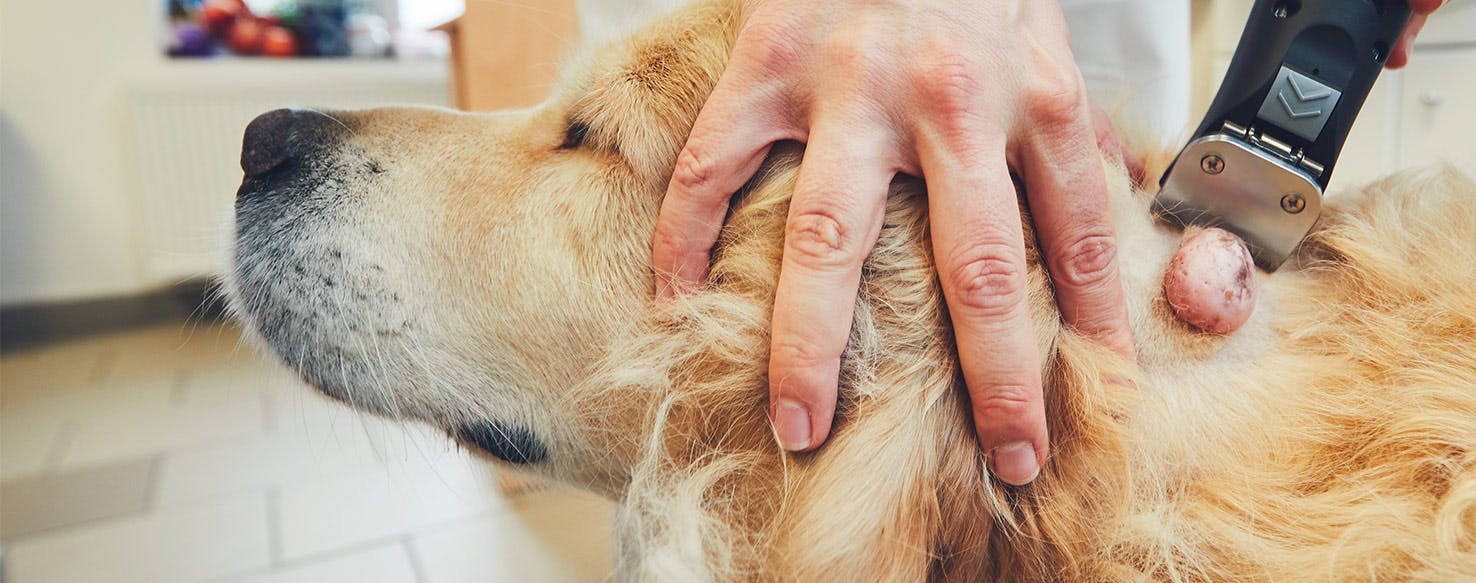Updated: 9/21/2021
While we may walk together regularly and lie on the sofa watching TV together at the end of each day, are dogs similar to us enough that they can catch the same ailments and illnesses? What about cysts for example? They are a closed sac-like structure, found within tissue, and usually consisting of liquid or gaseous material. If your cyst ruptures or get infected, not only can it be extremely painful, but they can also be cancerous. So handling a cyst with caution and medical guidance is vital. But can your dog really suffer from cysts like we humans can?
Can Dogs Get Cysts?
YES!
Cysts in dogs are usually just a buildup of sweat, plugged oil glands, or dead skin cells. Relax: for the most part, they’re harmless! Although plenty of medical studies have underlined that cysts can occur from genetic conditions and serious impact injuries, many may feel that means dogs are unlikely to suffer the wrath of the cyst, but it is in fact, absolutely possible for your dog to develop cysts.
Does My Dog Have a Cyst?
Fortunately, locating and identifying a cyst in your dog is relatively straightforward. If you see a nodule (raised area of skin), from less than 1/2 an inch in size, to over 2 inches, it could be a cyst. They can also be mobile under the skin, and there could be several of them. Other symptoms to watch out for are a yellow substance oozing out of the nodule, or blood coming from it.
Cysts can occur frequently because they are caused by a large number of things. They can take hold because of a little insect bite or allergy. They could come about because of a swollen hair follicle, hormonal imbalance, or as a result of a genetic predisposition and trauma.
If you’re concerned about a cyst, your vet will be able to diagnose the condition. After undertaking a physical examination, the vet will perform a histopathology. This entails a microscopic examination of the tissue (removed by needle). From this, the vet can rule out more serious illnesses, as well as garner a more accurate understanding of the cyst at hand.
How Do I Treat My Dog’s Cyst?
Treating your dog’s cyst is usually relatively straightforward, and recovery time is swift. Treatment will first depend on the number of cysts and the overall health of your beloved dog. If the cyst is new, the vet may wish to observe a while before undertaking any treatment. However, at a later date, the vet may opt to open and drain the cyst, and then treat it with a topical medication.
If your dog’s cyst has ruptured by the time you have reached the vet’s, being concerned about infection and inflammation, they may opt to surgically remove the cyst. If an infection is present, they may choose to treat the infection first, drain the cyst, and then surgically remove it.
The good news is, your dog will likely recover from a cyst promptly. You will need to keep the area clean, avoiding baths until the vet gives you the green light, and you may also need to utilize an Elizabethan collar. Although it is worth noting, it is not uncommon for new cysts to appear.
Nothing beats hearing the experiences of other dog owners and getting your questions answered by trained medical professionals.
How Are Cysts Similar in Dogs, Humans and Other Pets?
In many ways, cysts manifest themselves in dogs much like they do in humans and other animals. Some of these similarities are outlined below:
-
Cysts in dogs and humans appear as inflamed nodules.
-
Both dogs and humans can suffer from a number of cysts at the same time.
-
A yellow substance and blood can ooze out from cysts in both humans and dogs.
-
Cysts can be mobile under the skin in humans, dogs and other animals.
-
Cysts can become infected, sore and painful in all.
How Are Cysts DIfferent in Dogs, Humans and Other Pets?
As you have just seen, in many ways cysts manifests themselves in dogs much like they manifest themselves in humans and other animals. But there are also a number of significant ways that cysts in dogs differ. For example:
-
Cysts in humans and big animals can grow to a much bigger size than they can in dogs.
-
Cysts in dogs are often much harder to identify due to the significant amount of hair covering the body.
-
Dogs more frequently develop cysts from swollen hair follicles and insect bites than humans do.
Case study
A gorgeous dogs named Bailey recently suffered from a bodily cyst. The owner did the right thing, taking her to the vet, having the cyst opened and drained. It was healing nicely, but Bailey then ended up biting the cyst, causing it to bleed again. The owners understandably, were concerned about the cost and having to keep going back to the vet. The solution lies in Elizabethan collars to prevent the dog making the cyst worse.
This is an important lesson to learn from Bailey. If your dog does hs a cyst, it is vital you do as much as you can to stop the cyst worsening, or never healing! Bailey ended up needing the cyst surgically removed, but the right, cautious measures from owners can prevent surgery being required.


